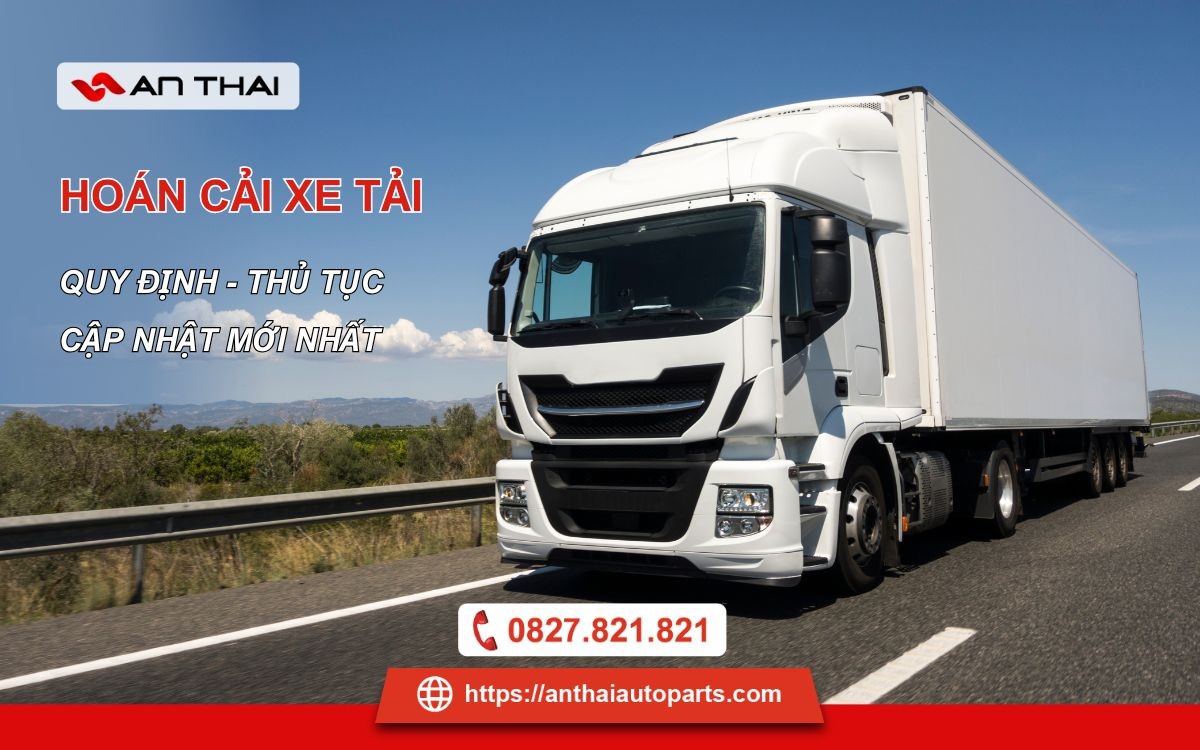Converting a car to a truck optimizes vehicle functionality, but requires strict compliance. This article provides updated information on the conversion process, including requirements, conditions, and regulations, to help you comply with the law and save time.
 Truck conversion process diagram
Truck conversion process diagram
What is Truck Conversion? The Purpose of Conversion
Truck conversion involves adjusting the structure, dimensions, and function of a vehicle from its original design. This process includes changing the size of the cargo box, installing a new cargo box, and upgrading the engine and drivetrain.
Purposes of conversion:
- Meeting diverse needs: transporting specialized goods, serving agriculture, construction, etc.
- Improving efficiency: saving fuel, optimizing operation.
- Increasing transport capacity: carrying goods of appropriate volume and size.
Note: Truck conversion must comply with the law and ensure traffic safety.
Types of Truck Conversion
Based on Circular 85/2014/TT-BGTVT, truck conversions are classified as follows:
- Cargo box conversion: Changing the size, shape, structure, and material of the cargo box.
- Drivetrain conversion: Changing the structure, shape, size, power of the engine, gearbox, and drive axle.
- Electrical/electronic system conversion: Adjusting or changing the structure, power, and size of the electrical/electronic systems on the vehicle.
- Equipment conversion: Changing the equipment on the vehicle, adjusting function, size, shape, and structure.
Latest 2024 Truck Conversion Regulations
According to Circular 43/2023/TT-BGTVT (amending Circular 85/2014/TT-BGTVT), effective from February 15, 2024:
- Prohibited: Modifying the suspension, steering, or braking systems (except in special cases); converting tractor trucks into other types of vehicles (except for specialized vehicles); changing tire sizes, number of axles, axle spacing, or track width (except in special cases); increasing length or height (except for specialized vehicles, changing front/rear panels of passenger vehicles); increasing cargo box size or tank volume; using used systems or components (except for specialized equipment, engines).
- Payload: After conversion, it must not exceed the original design.
- Technical specifications: Must comply with Circular 42/2014/TT-BGTVT.
- Vehicles carrying dangerous goods: Need quality and technical safety certification.
- Conversion limits: Each vehicle can only convert 1 of 2 main assemblies (engine or frame); other systems (cab, body, brakes, suspension, fuel) are limited to 3 systems.
Truck Conversion Requirements
- Lifespan: Under 15 years (except for specialized vehicles converted into other vehicles, usage time over 5 years). Imported unused vehicles wanting to convert the cargo box: over 6 months from the date of inspection.
- Condition: Frame, engine, drivetrain, steering must be intact, not damaged or degraded.
- Documents: Certificate of technical safety and environmental protection inspection; vehicle registration certificate, certificate of vehicle ownership; manufacturer’s technical documents.
- Other requirements: Vehicle must be registered, licensed; meet inspection standards; not subject to conversion prohibitions.
Truck Conversion Procedures
- Prepare documents: Conversion request, copy of vehicle registration, inspection certificate, conversion design drawings.
- Submit documents: The vehicle registration authority reviews.
- Design appraisal: Timeframe of 10 working days.
- Design approval: Receive a certificate of appraisal.
- Carry out the conversion: According to the approved design.
- Inspection: Ensure technical safety and environmental protection requirements.
- Register the converted vehicle: After completing the inspection.
The conversion certificate is valid for 12 months.
Penalties for Incorrect Cargo Box Conversion
Incorrect cargo box conversion is penalized according to Decree 123/2021/ND-CP and Decree 100/2019/ND-CP:
- Cargo box size converted incorrectly: Fine of VND 2,000,000 – 3,000,000.
- Cargo box specifications do not match the inspection certificate: Fine of VND 6,000,000 – 8,000,000 (individuals), VND 12,000,000 – 16,000,000 (organizations); revocation of driver’s license for 1-3 months.
Truck Conversion Registration Authority
- Vietnam Register: Complex conversions, significantly affecting vehicle structure.
- Local motor vehicle registration centers: Simple, common conversions.
- Licensed conversion design and construction facilities.
Restoring a Converted Vehicle to Original
A converted truck can be restored to its original state according to the following process:
- Check documents and identify previous conversion information.
- Submit an application to convert back to the original (Vietnam Register or authorized registration unit).
- Carry out the conversion at a licensed unit.
- Re-inspect the vehicle after conversion.
- Update information in the Vehicle Registration Certificate and inspection book.
Conclusion
Converting a car to a truck requires strict compliance with legal regulations. This article has provided information on procedures, regulations, and penalties. Contact the authorities or authorized units for specific advice.
